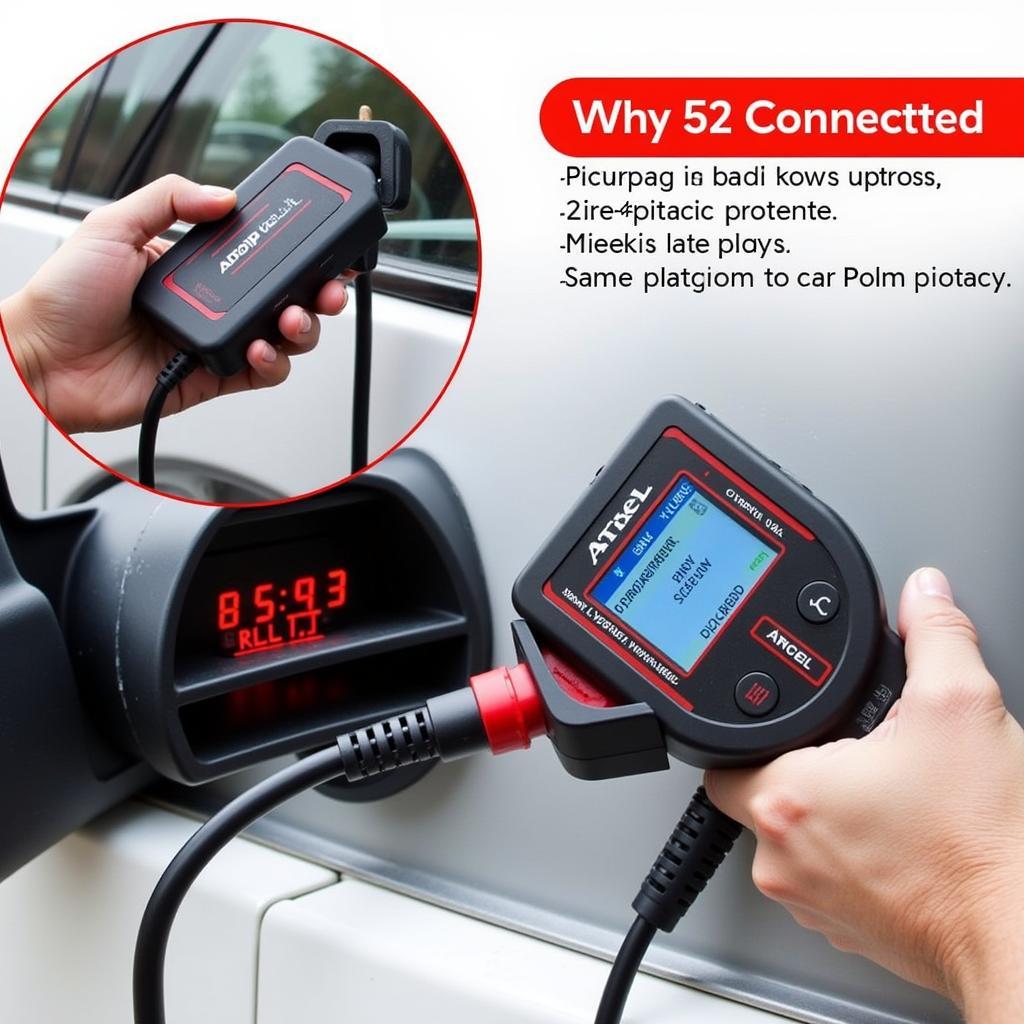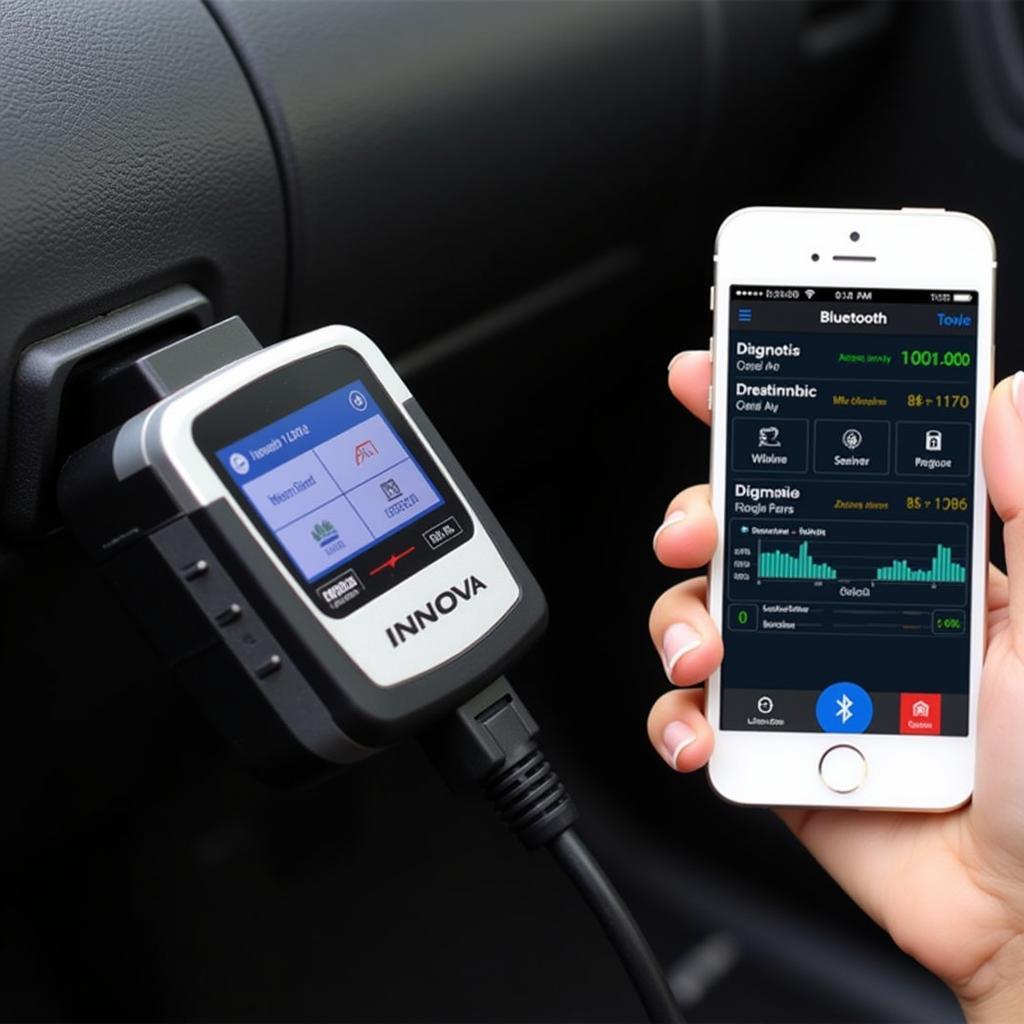The automotive industry is rapidly evolving, with electronic systems becoming increasingly complex. As a result, the tools and techniques used to diagnose and repair vehicles must also keep pace. This article will explore the latest trends in electronic diagnostic tools development, providing valuable insights for car owners, repair shop owners, and automotive technicians alike.
One of the most significant trends is the increasing use of cloud-based diagnostic platforms. These platforms offer numerous advantages over traditional standalone tools, including:
Cloud-Based Diagnostics: The Future of Vehicle Repair
- Real-Time Data Access: Cloud-based platforms allow mechanics to access vehicle data from anywhere with an internet connection. This is especially useful for remote diagnostics and troubleshooting.
- Software Updates: Gone are the days of manually updating your diagnostic software. Cloud platforms automatically provide the latest updates, ensuring you always have access to the most current information and capabilities.
- Data Sharing and Collaboration: These platforms facilitate seamless data sharing between technicians, workshops, and even vehicle manufacturers. This streamlines the repair process and can help diagnose complex issues more effectively.
The Rise of Artificial Intelligence in Diagnostics
Artificial intelligence (AI) is revolutionizing many industries, and automotive diagnostics is no exception. AI-powered diagnostic tools can analyze vast amounts of data to identify patterns and anomalies that might be missed by even the most experienced technicians. This enables:
- Predictive Maintenance: AI algorithms can predict potential component failures before they occur, allowing for proactive maintenance and reducing the risk of unexpected breakdowns.
- Faster and More Accurate Diagnoses: By analyzing vehicle data, AI can pinpoint the root cause of problems with greater accuracy and speed, saving valuable diagnostic time.
- Personalized Repair Recommendations: Some AI-powered tools can even generate personalized repair recommendations based on the specific vehicle, its history, and the diagnosed issue.
The Growing Importance of Cybersecurity
As vehicles become more connected, the risk of cyberattacks also increases. Consequently, cybersecurity is a growing concern in electronic diagnostic tools development.
- Secure Data Transmission: Modern diagnostic tools must employ robust encryption and security protocols to protect sensitive vehicle data from unauthorized access during transmission.
- Software Authentication: Ensuring the authenticity of diagnostic software is crucial to prevent the installation of malicious software that could compromise vehicle systems.
- Regular Security Updates: Just like any other software, diagnostic tools require regular security updates to patch vulnerabilities and address emerging threats.
The Role of Augmented Reality and Remote Assistance
Augmented reality (AR) and remote assistance technologies are also transforming the way vehicles are diagnosed and repaired.
- AR-Enhanced Diagnostics: AR overlays digital information, such as wiring diagrams or component locations, onto the mechanic’s real-world view. This enhances their understanding of complex systems and can guide them through repair procedures.
- Remote Expert Support: With remote assistance, technicians can connect with experts anywhere in the world to receive real-time guidance and support during challenging repairs. This is especially valuable for specialized or less experienced technicians.
Conclusion
The Trends In Electronic Diagnostic Tools Development point towards smarter, more connected, and data-driven solutions. As automotive technology advances, so too will the tools used to maintain and repair vehicles. By embracing these advancements, car owners, repair shop owners, and technicians can improve the accuracy, efficiency, and security of vehicle diagnostics and repairs.
For expert advice and assistance with all your automotive diagnostic needs, contact ScanToolUS at +1 (641) 206-8880 or visit our office at 1615 S Laramie Ave, Cicero, IL 60804, USA.
FAQs
1. What are the essential features of a modern electronic diagnostic tool?
Modern tools should offer cloud connectivity, AI-powered diagnostics, cybersecurity features, and support for remote assistance and augmented reality.
2. How often should I update my diagnostic software?
It’s crucial to keep your software updated to ensure access to the latest features, bug fixes, and security patches. Check for updates regularly, or opt for a cloud-based platform that updates automatically.
3. What are the benefits of using a python diagnostic tool?
Python-based diagnostic tools offer flexibility and customization options for experienced users. They are particularly useful for developing custom diagnostic scripts and working with open-source automotive software.
4. Can I perform diagnostics on my car myself?
While basic code readers are available for car owners, professional-grade diagnostic tools and the expertise to interpret their output are often required for accurate diagnosis and repair.
5. Are there specific diagnostic tools designed for electric vehicles?
Yes, as electric vehicles become more common, specialized diagnostic tools are emerging to cater to their unique electrical systems and components. These tools often include features for analyzing battery health, electric motor performance, and high-voltage systems.
6. What are the job prospects for someone skilled in using electronic diagnostic tools?
The demand for skilled automotive technicians proficient in using these tools is high and expected to grow further with the increasing complexity of vehicle systems.
vehicle diagnostic scan tool jobs germany
7. How can I stay informed about the latest trends in electronic diagnostic tools development?
Following industry publications, attending trade shows, and engaging with online automotive communities are great ways to stay up-to-date on the latest advancements in diagnostic technology.


